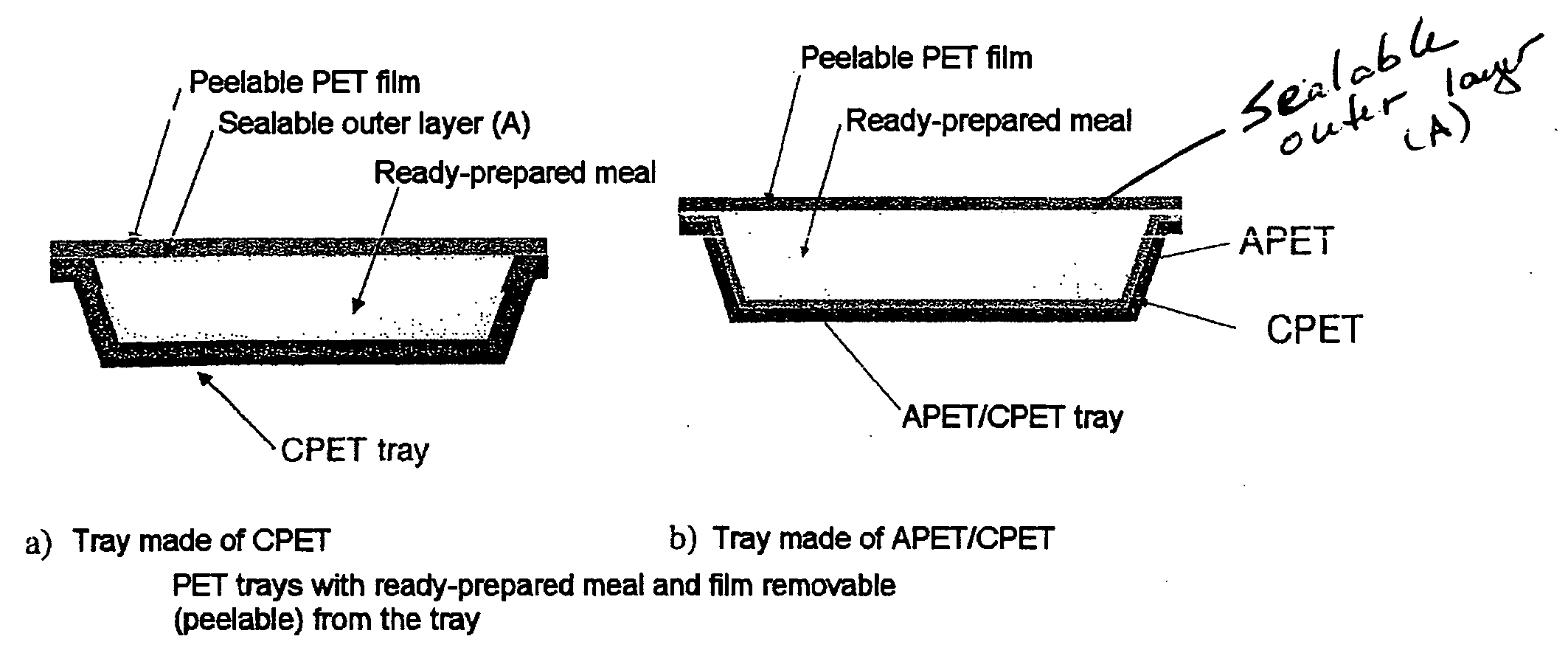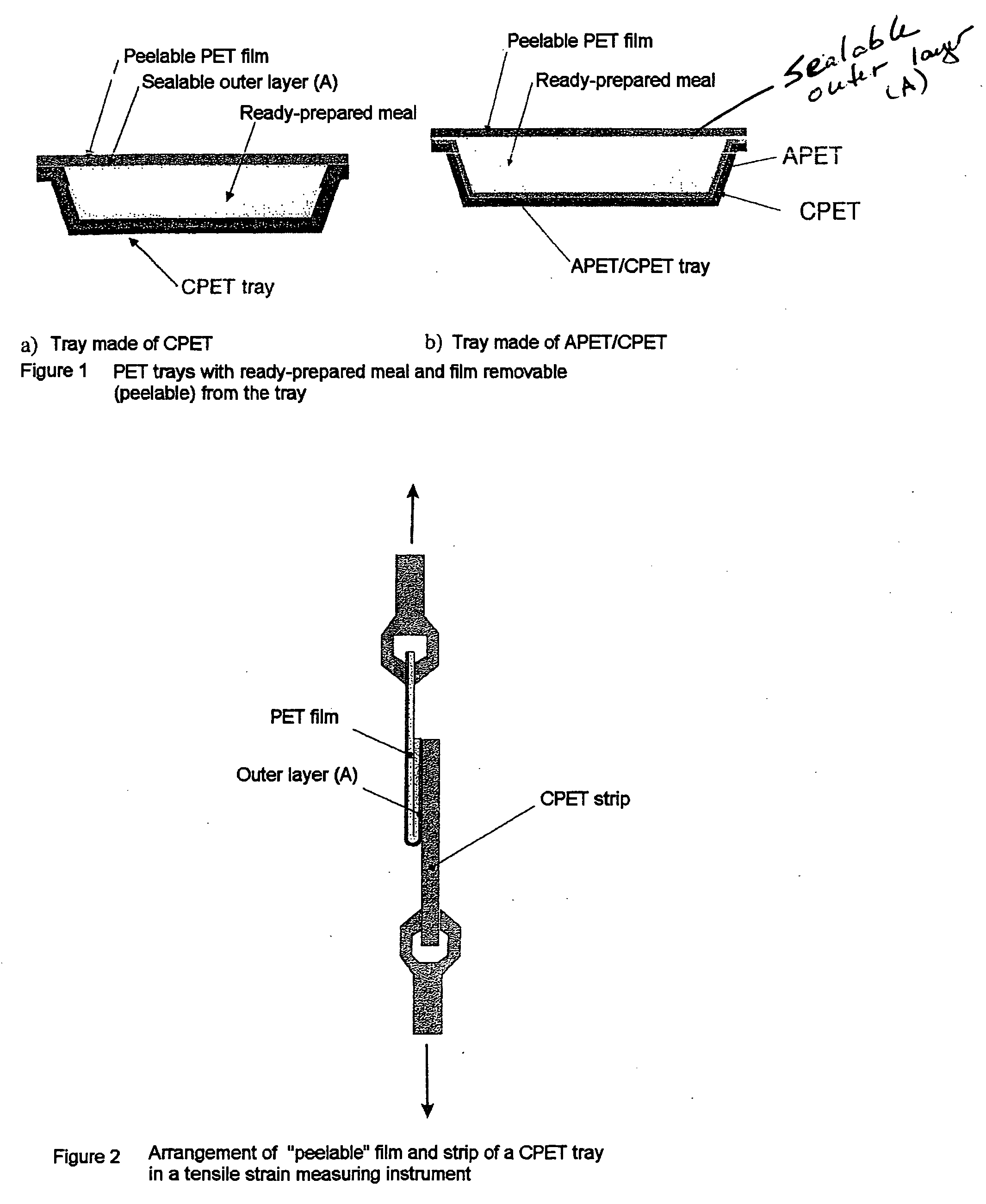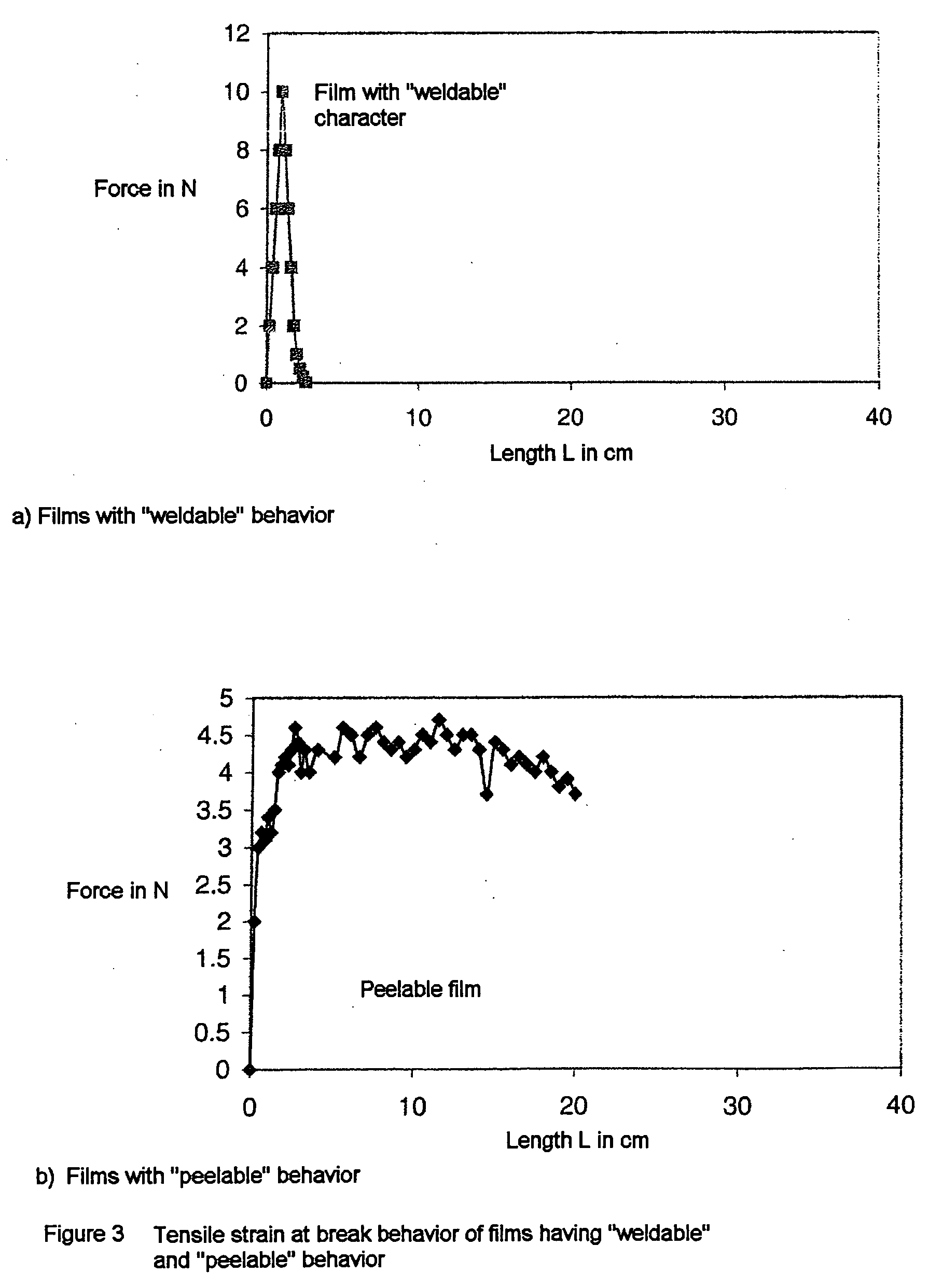Peelable polyester film having improved oxygen barrier, process for its production and its use
a polyester film, peelable technology, applied in the direction of magnetic recording, lamination, closures, etc., can solve the problems of unfavorable packaging opening without tools, film destruction on removal from the tray is undesired, force falling immediately back to zero, etc., to achieve the effect of overcoming the barrier properties
- Summary
- Abstract
- Description
- Claims
- Application Information
AI Technical Summary
Benefits of technology
Problems solved by technology
Method used
Image
Examples
example 1
[0163] Chips of polyethylene terephthalate (dried at a temperature of 150° C. to a residual moisture content of below 100 ppm) and poly(m-xyleneadipamide) (MXD6, likewise dried at a temperature of 150° C. to a residual moisture content of below 100 ppm) were fed in a mixing ratio of 85:15 to the extruder (single-screw extruder) for the base layer (B).
[0164] Chips of Polyethlene Terephthalate and particles were likewise fed to the extruder (twin-screw extruder) for the nonsealable outer layer (C). In accordance with the process conditions listed in the table below, the raw materials were melted and homogenized in the two respective extruders.
[0165] In addition, a mixture including polyester I, polyester II and SiO2 particles was prepared for the heatsealable and peelable outer layer (A). In Table 2, the particular proportions of the dicarboxylic acids and glycol present in the two polyesters I and II in mol % and the particular proportions of the components present in the mixture i...
example 2
[0177] In comparison to Example 1, the composition of the mixture for the sealable outer layer (A) was changed. The composition of the individual components remained unchanged in comparison to Example 1. The mixture now includes the following raw material proportions:
[0178] Polyester I=40% by weight
[0179] Polyester II=60% by weight
[0180] As a consequence of the higher proportion of polyester II in the mixture, the process parameters in the longitudinal stretching were modified. The new conditions for the longitudinal stretching are listed in the table below.
Longitudinal stretchingHeating temperature70-95° C.Stretching temperature97° C.Longitudinal stretching ratio3.7
[0181] The minimum sealing temperature of the film with respect to CPET trays is now 150° C. For all sealing temperatures, the films exhibited the desired peeling off from the tray according to FIG. 3b. The seal seam strengths measured are listed in column 3. For all sealing temperatures, peelable films were again o...
example 3
[0182] In comparison to Example 2, the composition of the mixture for the sealable outer layer (A) was changed. The unchanged in comparison to Example 1. The mixture now includes the following raw material proportions:
[0183] Polyester I=30% by weight
[0184] Polyester II=70% by weight
[0185] As a consequence of the higher proportion of polyester II in the mixture, the process parameters in the longitudinal stretching were modified. The new conditions for the longitudinal stretching are listed in the table below.
Longitudinal stretchingHeating temperature70-90° C.Stretching temperature93° C.Longitudinal stretching ratio3.5
[0186] The minimum sealing temperature of the film with respect to CPET trays is now 149° C. For all sealing temperatures, the films exhibited the desired peeling off from the tray according to FIG. 3b. The seal seam strengths measured are listed in column 3. For all sealing temperatures, peelable films were again obtained. The seal seam strengths of the inventive ...
PUM
| Property | Measurement | Unit |
|---|---|---|
| median diameter d50 | aaaaa | aaaaa |
| mol % | aaaaa | aaaaa |
| mol % | aaaaa | aaaaa |
Abstract
Description
Claims
Application Information
 Login to View More
Login to View More - R&D
- Intellectual Property
- Life Sciences
- Materials
- Tech Scout
- Unparalleled Data Quality
- Higher Quality Content
- 60% Fewer Hallucinations
Browse by: Latest US Patents, China's latest patents, Technical Efficacy Thesaurus, Application Domain, Technology Topic, Popular Technical Reports.
© 2025 PatSnap. All rights reserved.Legal|Privacy policy|Modern Slavery Act Transparency Statement|Sitemap|About US| Contact US: help@patsnap.com



